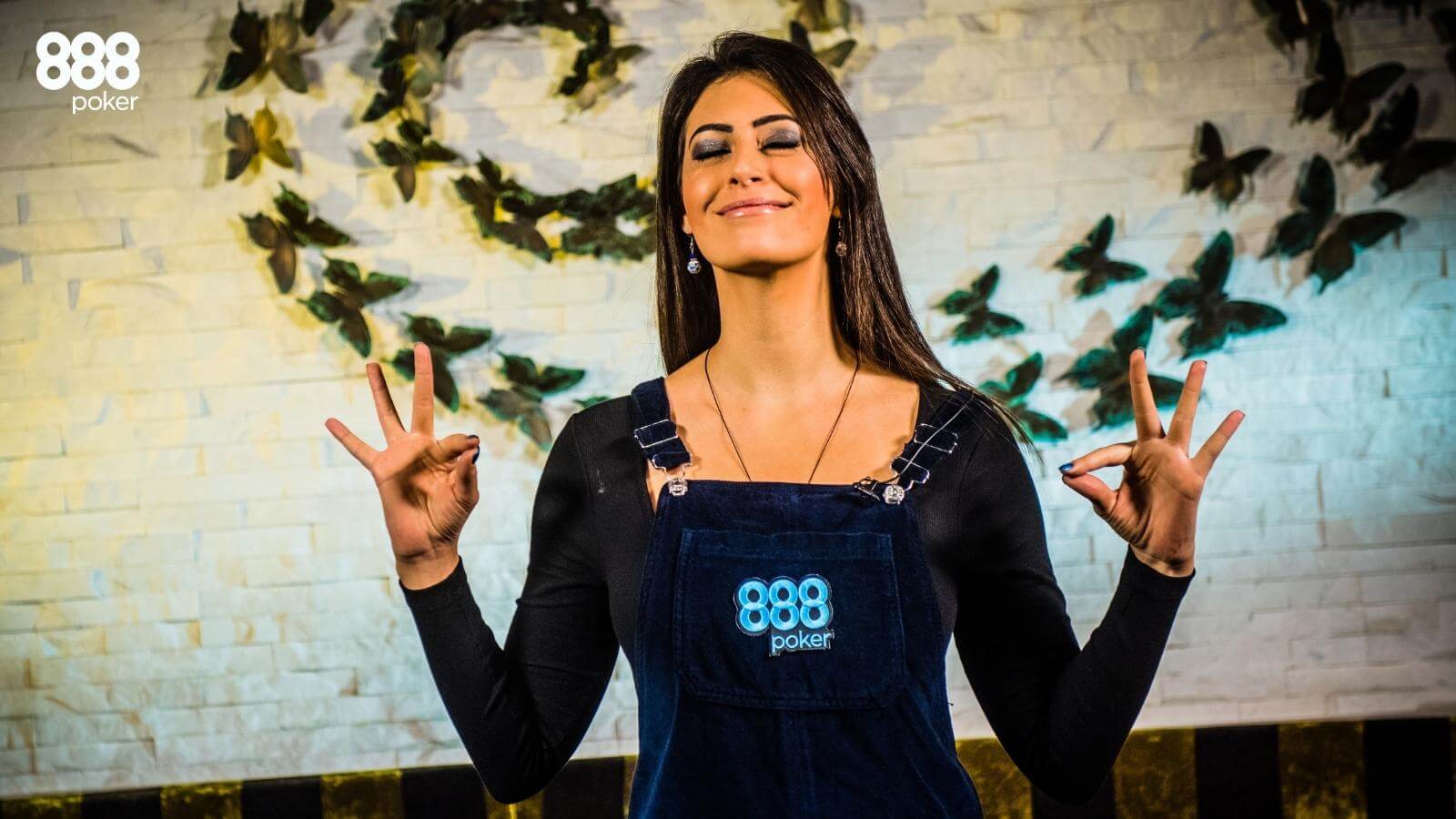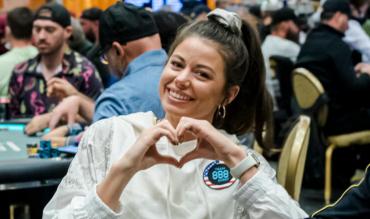If your wife or girlfriend has never played poker before…
Make this the perfect special occasion to teach her the rules of the game. Teaching a first-timer can be overwhelming. But with the right instructions, learning basic poker strategy can be a breeze.
The article writer is the author of the how-to-play poker book, A Girl’s Guide to Poker, and instructor for the women’s empowerment organisation Poker Power.
She has taught countless classes for beginners and knows what works.
Here’s what she recommends:
Play Only Specific Starting Hands
When it comes to which cards to play, Daniel Negreanu has straightforward advice for beginners: only play both cards over ten.
This guidance is an excellent bare-bones starting point. Here’s more of an explanation in the following three categories:
- Pairs. Any and all pairs are fine. From ducks to rockets, pairs are good and a go – after all, they give you a head start on the competition. Beginners also find this easy to remember.
- BOTH cards 10+. In the Poker Power classes, we expand Daniel Negreanu’s concept just a tad. Instead of both cards needing to be higher than ten, as long as both cards are at least a ten, they will do. This rule cuts out the typical beginners’ mistakes of getting attached to hands like King-Nine and thinking any ace is great. Your partner will instantly be better at preflop card selection than the average home game hero with this parameter in mind. It’s a game-changer.
Note: If you don’t want her calling raises with Ace-Ten off-suit or overvaluing every combination of Queen-Jack, you can narrow this category further
You can say - only play face cards if they make a royal flush.
You’d be surprised how many beginners can comprehend and adhere to that rule rather quickly. Be warned, though: it’s very tight. But they are bound to be an overnight shark if they can fold King-Ten off-suit preflop.
There are slightly looser guidelines, but this version is better if you want to keep any amateur out of trouble!
Keep in mind that saying, “only play face cards if they can make a royal flush”, is clearer and more easily memorised than both cards ten and higher.
- Suited connectors. Only play numbered cards if they are consecutive and the same suit. For example, Five-Six of diamonds, Six-Seven of spades, Seven-Eight of clubs, Eight-Nine of hearts and so on. How about a Nine and Ten of different suits? Absolutely not! You want to be (lovingly) strict while adhering to the criteria.
These categories result in a much narrower range than beginners expect. The best way to preface this is by letting them know that professional poker players regularly fold 80% of their hands – before the flop!
If you’re folding a lot, you’re doing it right. Setting up this expectation will help soften the shock factor of always folding.
Focus on Hand Rankings
Start with poker hand rankings if you don’t want to get into preflop card selection. It’s pretty intuitive that two-pair beats one pair and three-of-a-kind beats two-pair.
But don’t dwell too much on memorising every hand ranking perfectly. Print out or display the list for what-beats-what on a mobile device or tablet. There is no shame in using a reference. Then play two games.
- The first game is simple hand match-ups. Deal each of you a hand face-up. Before the flop, ask who is winning. Then do the same after the flop, the turn, and the river. While you’re on the flop or turn, a perfect exercise is asking if they have a drawing hand.
- “What card do you need to win?” So, if they need a five for a straight, say they need a five, or a heart for a flush - and so forth.
- The second game is an extremely helpful drill from a poker dealer. He would deal a flop and ask what the best possible hand (aka “the nuts”) is. If the flop is Five-Six-Seven, for example, then the nuts would be Eight-Nine. Let’s say the turn card is an Eight – what’s the nuts now? Nine-Ten.
It’s a great game that has you thinking about all the hand possibilities rather than only focusing on your own hand. Beginners almost always play poker with blinders on – only able to think about their own cards. This exercise helps them start thinking broader.
It’s useful for slightly more experienced poker players too. It helps with instantly recognizing straights and flushes and full houses. So, you can pay more attention to bet sizes and tells. The last thing you want to do is be exhausted just trying to figure out the flop.
This drill has the benefit of expediting the flop evaluation process – and saves money for all those times “not seeing” the straight.
Playing at the Casino vs Playing at Home
If you are struggling with a starting point for your significant other, consider introducing them to video poker. Your partner will appreciate not being overwhelmed. (A better way to overwhelm them? Try a home-cooked gourmet meal. Inundate them with fancy desserts rather than poker rules).
If they have played poker before:
You’re in luck! There are lots of fun ways to enjoy poker together (if you aren’t already).

OPTION A: Go To The Casino
Most people may not associate card rooms with romantic ambience, but connections are made there all the time. Plus, the highs and lows of poker reveal a person’s true colours!
If you are playing at the same table, establish basic etiquette. Make it clear to the people at the table upfront you’re together — otherwise, you risk people feeling conned.
Generally , the higher in stakes you go, the more competitive and less casual your table will be.This outing is, first and foremost, a poker date night. Play the lowest blind level possible, so you can focus on having fun rather than big financial swings.
Even if you play at separate tables, your priority needs to be your partner!
Most casinos also allow someone to sit behind their partner and watch. Sweating your partner’s hands is surprisingly entertaining. It will undoubtedly give you lots to talk about if you want to have deep discussions about poker.
Shadowing each other is a fantastic way to enjoy poker together.
If you are both entering a tournament, consider a “last longer” bet! So, even if one of you doesn’t cash, whichever person stays in the game the longest wins a prize of your choosing.
Side bets like these are your thing? Then try the “trash hand” game.
Each of you picks a junky, raggedy poker hand – like King-Three or Queen-Deuce. Big card + little card combinations work best.
- Whenever your hand makes two pair, your partner needs to pay you a dollar (or $5, $20, depending on your amount of gamble).
- Whenever your hand makes a full house, double the amount. And vice-versa with your partner’s hand.
This rule applies to all boards, by the way. So even if you two have both folded, the game is still on.
Complete strangers could be battling it out. But if your hand is King-Three and the flop is King-Three-Jack, your partner still owes you the side bet! Not only is it an innocent, harmless game, but it also keeps you focused on the hands where you’re not involved.
All hands become more competitive and exciting, even if you’re sitting on the sidelines. You’d be surprised how much a cute game like this gets your adrenaline going!
It’s also a lot more personal than the standard “red or black” because you’re betting on the hand of your choosing… even if it’s junky.
OPTION B: Play At Home
If you want a more casual experience, playing poker together at home is your best bet. You benefit from more relaxed rules, and, well, dress codes.
Keep in mind that playing poker together at home is fun but much more distracting – so plan accordingly.
- Shorter games are ideal
- Try playing quick sit ‘n’ go’s
- If you’re playing heads-up, don’t play an infinite cash game that gets old fast
- Use timers to speed-up the blinds, or apps
- Budget for around 30 minutes if you’re staying at home.
If the date is going well, anything longer than that should be impossible due to lack of focus…
Whatever you do, have fun!
Win or lose. You’re lucky if you’ve got a partner that wants to play poker!


